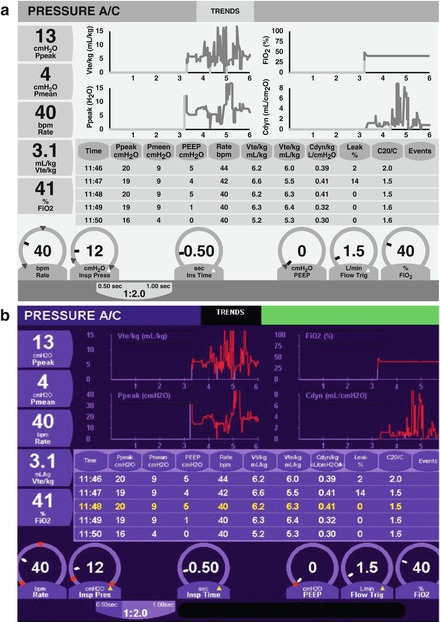and Mark C. Mammel2, 3
(1)
Division of Neonatal-Perinatal Medicine, C.S. Mott Children’s Hospital University of Michigan Health System, Ann Arbor, MI, USA
(2)
Neonatal Medicine, Children’s Hospitals and Clinics of Minnesota, St. Paul, St. Paul, MN, USA
(3)
University of Minnesota, Minneapolis, MN, USA
Keywords
Trend screensMinute ventilationAutoweanAnother benefit of the microprocessor-based technology is the ability to store data and to present it in multiple formats. Trend screens are now an integral component of most present-day mechanical ventilators and enable the clinician to follow changes over time and even to reconstruct past clinical events.
Trend screens may present both graphic and numeric data. Ventilatory parameters can be displayed in a graphic format over several hours or numerically on a minute-by-minute basis. A typical trend screen is shown in Fig. 5.1. The upper half shows hourly graphic trends for four selected ventilator parameters. The lower half lists selected parameters in tabular form from minute to minute. All of the parameters may be changed, and the clinician can scroll through the screen to find times of interest. Although this may seem obvious, trend screens are of no value if they are not customized by the user to display values of interest for a particular patient. Most ventilators allow trending of far more parameters than are used in the neonatal intensive care unit (NICU), because so many of the current devices are “cradle-to-grave” single platform machines. Indices useful for adult intensive care may be meaningless in the NICU, and the default screen rarely is useful.




